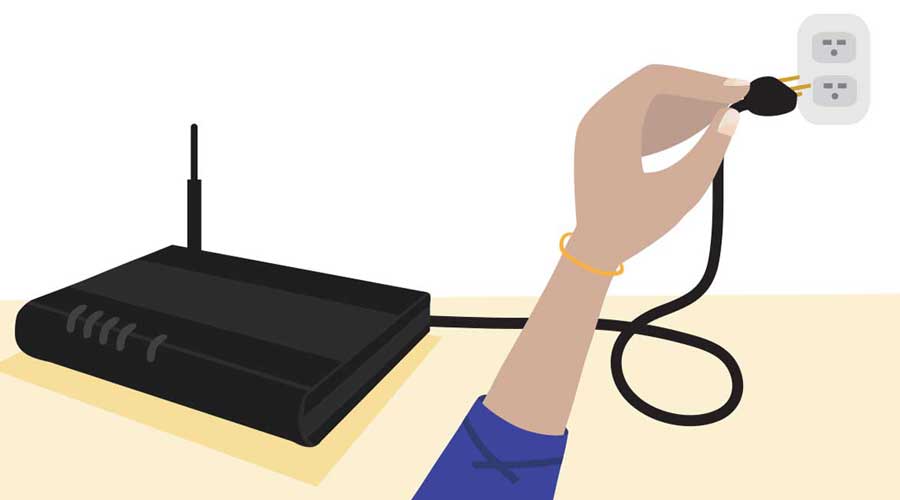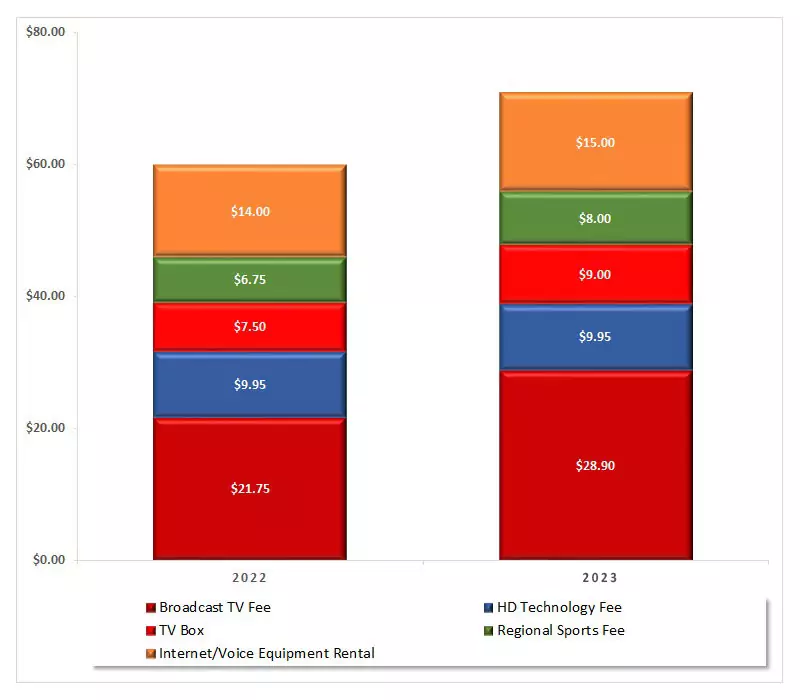Modems, Routers, Gateways, Wi-Fi, Oh My
In a previous blog we extolled the benefits of upgrading to Wi-Fi 6. But upgrading your Wi-Fi is not the only thing you can do to increase the performance of your internet connection. We often also recommend upgrading your modem.
Terminology can be confusing. For those not familiar, here are a few terms to help distinguish between these items:
- Modems: These devices connect directly to a coax or DSL wall jack and transform the coded signal from your ISP (Internet Service Provider) into signals usable by your connected devices. These do not have Wi-Fi capabilities. And, these devices only have one Ethernet Jack available, that typically connects to a router.
- Optical Network Terminal (ONT): Just another name for a non Cable, fiber modem.
- Routers: These devices take the signal from the modem and splits it up so you can use multiple devices (phones, streaming media players, computers, etc.). Without a connection to a modem, the router cannot facilitate a connection between your phones or computers to the internet.
- Gateways: These devices combine a modem and a router into a single piece of hardware. If you subscribe to Xfinity or Century Link, they usually rent to you a Gateway (the modem and router inside a single plastic housing). At StreamWise we always recommend that cable internet subscribers use a separate modem and router. We never encourage the use of Gateways because they do not perform as well and there is usually an expensive monthly rental fee.
- Wi-Fi: This one often confuses people because wrongly Wi-Fi is often referred to synonymously as Internet. Without complicating the backstory, Wi-Fi is simply another name for Wireless Ethernet. Instead of Ethernet wires connecting your phones and computers to the router, Wi-Fi allows you to connect wirelessly. Wi-Fi is NOT internet and internet is not Wi-Fi. Wi-Fi = Wireless Ethernet.
While these terms can sometimes be confusing, they are important to understand as you make decisions about the performance of your home network. Our recommendation, whenever possible, is to use a separate modem and router.
Why do we recommend a separate modem and router?
Because the router technology and modem technology evolves independently. As Xfinity, a cable internet provider, races to be competitive with fiber internet providers, they typically upgrade the capabilities of their network to deliver more speed. But in order to take full advantage of this speed, you may need to upgrade your modem.
Getting 2 separate devices not only gives you better Wi-Fi, it also gives you more flexibility for the future. Since Cable uses coax and DSL/Fiber comes in via hpone/fiber lines a gateway is rendered obsolete when you switch providers and you need all new equipment. Using 2 separate devices means you Wi-Fi name, password and Router/Mesh will stay the same.
Recommended Hardware:
- Wi-Fi 6 Mesh Router: TPLink Deco X20 Mesh
- Tri Band Wi-Fi 6E Mesh: TPLink Deco AX5400 Mesh
- Cable ISP Modem: Motorola MB7421 Cable Modem only
A story of the modems in my home:
When I first moved into my house ten years ago, I could only get a maximum of 150 MBPS so I needed a modem capable of handling that speed. I had no idea that ten years later, I would be able to get 900 MBPS for nearly the same price as I paid for 150 MBPS ten years earlier. However, my older modem, while capable of speeds up to 300 MBPS, could not handle the new 900 MBPS. So I upgraded the modem.
However, when 900 MBPS became available at my house, I wanted to give it a try. Did I need that much speed? No, because my mesh router gave everyone in the house great WiFi signal and balanced the sharing of the 300 MBPS between all our devices. But, for some of us, 900 MBPS is like having a fast car – we just want to see what it will do – and the price was right. If they wanted to charge me $100 for 900 MBPS I would have told them no.
So, which modem did I choose?
I chose the Motorola MB7621 with 24×8 channel bonding capable of delivering speeds of 1000 MBPS (1 Gig). My older modem only had 8×4 channel bonding and could only deliver 300 MBPS (0.3 Gig). While channel bonding is too technical to get into here, in general, the higher the first number, the better your download speeds will be. The higher the second number, the higher your upload speeds will be.
So, even though I was subscribed to 900 MBPS of service with Xfinity, with my old modem I was only capable of getting 300 MBPS. But when I upgraded to the MB7621, I was able to get speeds of 900 MBPS.
Please note that these speeds were all tested via wired Ethernet, not Wi-Fi. Wi-Fi speeds, no matter your router, will always be slower than pure wired speeds – that’s physics for you. Wi-Fi speeds will also depend entirely on the device you are testing from. The new Pixel Pro 6 will always get faster Wi-Fi speeds than an older iPhone 11. And three years from now, the newest iPhone will get faster speeds than the Pixel Pro 6.
Conclusion: the lesson for modems is this:
- If, in the future, you feel the need for more speed, then make sure you check your modem’s capabilities.
- Just because you upgrade your modem to get better speed, it does not mean you need to upgrade your network.
- Upgrading your modem is not for the non techy. Calling Xfinity is work.
- If fiber is available in your neighborhood (nextlight in Longmont, or Centurylink elsewhere), get on it as soon as possible because it is more reliable than cable and has no data caps.




